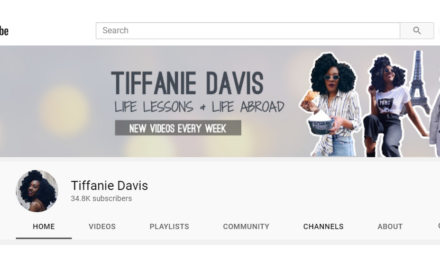Fall is my favorite time of year – the foliage is stunning, everything smells like pumpkin spice, and I get to wear cozy sweaters and rain boots! Fall is also a great time of year to start thinking about year-end, and how you can improve your content management strategy to set yourself up for success in the year ahead. Easier said than done, right? I like to start by using the process of elimination. In this post, we’ll review five content management pitfalls you should avoid right now to help you improve your content marketing strategy.
#1 Not using a single content repository–Did you know on average, sellers only use about 30% of marketing content? Even after seeing several researchers like Serious Decisions back this statistic, I think (more like I hope) it’s not entirely true – I can’t be wasting that much time creating content that goes unused right? Wrong. As a content marketer, you’ve probably heard this all too often. While it’s tempting to blame sales for not being able to find the content they need or reuse dated content you specifically told them not to – it’s important to shorten content discoverability time by using a Content Management System (CMS) that provides a single content repository for all of your resources. Don’t fall victim to thinking you can organize your content in three different places, and expect sales to know exactly where the latest content resides. Many organizations make this mistake, and it can have a big impact on productivity. Housing everything in one place allows you to stay organized and helps increase sales productivity by enabling sellers to find what they need quickly and easily. Many CMS tools also provide granular search capabilities that allow sellers to search recommended content based on focus area, product, industry, geography, or whatever makes sense for your business.
Having all of your content in a single repository also allows you to identify where the gaps in your content are, and where you should be dedicating resources to refresh your content based on engagement analytics.
#2 Ignoring the power of analytics–Housing content in a single place is great – but don’t you want to know if your content is resonating with your target audience? Don’t underestimate the power of analytics. You can start optimizing your content by using analytics to view content usage, effectiveness, and engagement. Tools with accurate analytic capabilities allow you to track which content is being shared the most by sellers, and even track which version of a presentation has performed the best. Using this key insight gives sellers the edge they need to move prospects through the sales cycle quicker with content you know will resonate. It also ensures every seller always has the most effective content at their fingertips.
Measuring content performance will enable you to pinpoint what content is helping generate revenue, and ensure you’re dedicating your resources appropriately to maintain high performing content. Many tools also allow sellers to leave comments to help others understand what’s worked in the past!
#3 Not motivating sellers to weigh in on content–This one might sting but hear me out – using analytics allows you to see what content is being shared the most by sellers, but it’s also important to give sellers the ability to weigh in on what’s working and what isn’t. They are the ones out there in the field listening to prospects share their pain points, so it’s also a good idea to have a dedicated forum or area within your CMS to share which resources are resonating best with different areas of the business, and where there is room for improvement. Since many CMS and sales enablement tools allow sellers to leave comments on the backend, it’s worth encouraging them to share in a single place, so other sellers can learn from their success and failures. It’s of course up to your digression how much you let those opinion influence your content marketing efforts!
#4 Not aligning your content with the buyer’s journey–This is a big one – once you’ve gained a holistic understanding of what content is performing the best, and where the gaps in your content are, you’ll want to ensure you have effective content for each stage in the buyer’s journey. Many companies make the mistake of focusing all of their content towards the top of the funnel, but it’s very important you have supporting content for each stage at every step of the way. In a recent study conducted by Highspot, respondents who had a sales enablement team said they were 51% more likely than companies without a sales enablement team to agree their content is closely aligned with sales stages. This means when you have a team that’s dedicated to creating content that aligns with the buyer’s journey, it will ultimately allow you to close more deals. 75% of respondents from the same study who were using sales enablement tools reported that their company had increased sales over the past 12 months – and nearly 40% reported sales increased more than 25%!
#5 Underestimating the importance of integration–Your organization is already using a lot of important tools like Salesforce, HubSpot, GoToMeeting, Office 365 and many more to help successfully sell your products and services. When you’re selecting a CMS or sales enablement tool, don’t underestimate the importance of finding a solution that integrates with these platforms to allow your team to easily identify content within these platforms that is performing the best, and conveniently pull everything together within the same platform. It’s important to identify which tools you need your CMS to work with before you select a solution. Many organizations don’t realize how important this is until months after implementing the tool with unsuccessful or mediocre results.
If you can avoid these five pitfalls, you’ll already be on your way to maintaining a more effective, more successful content management strategy.






